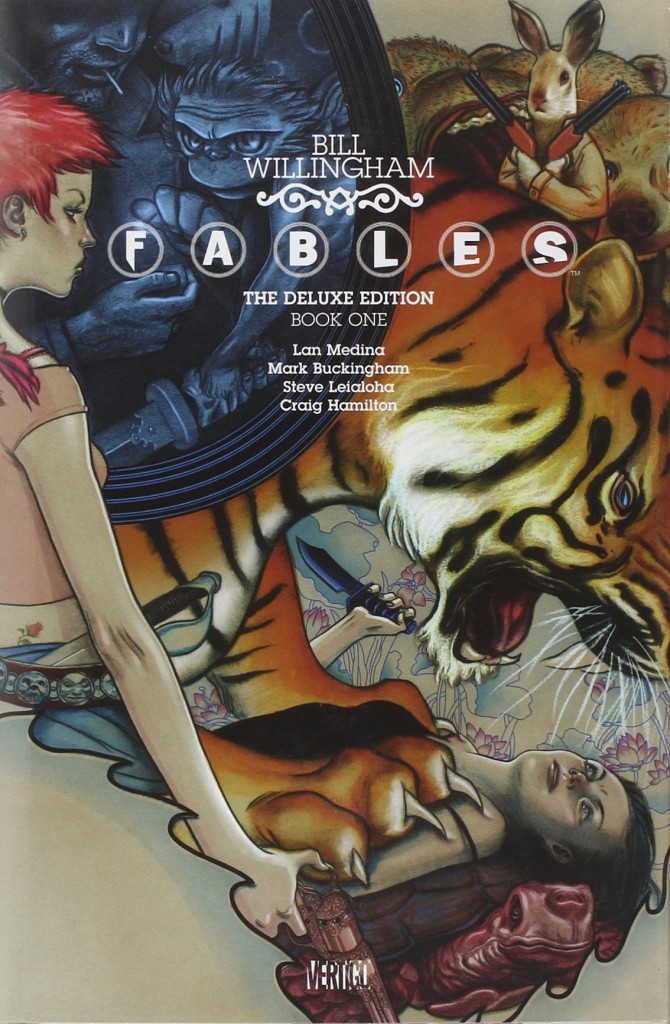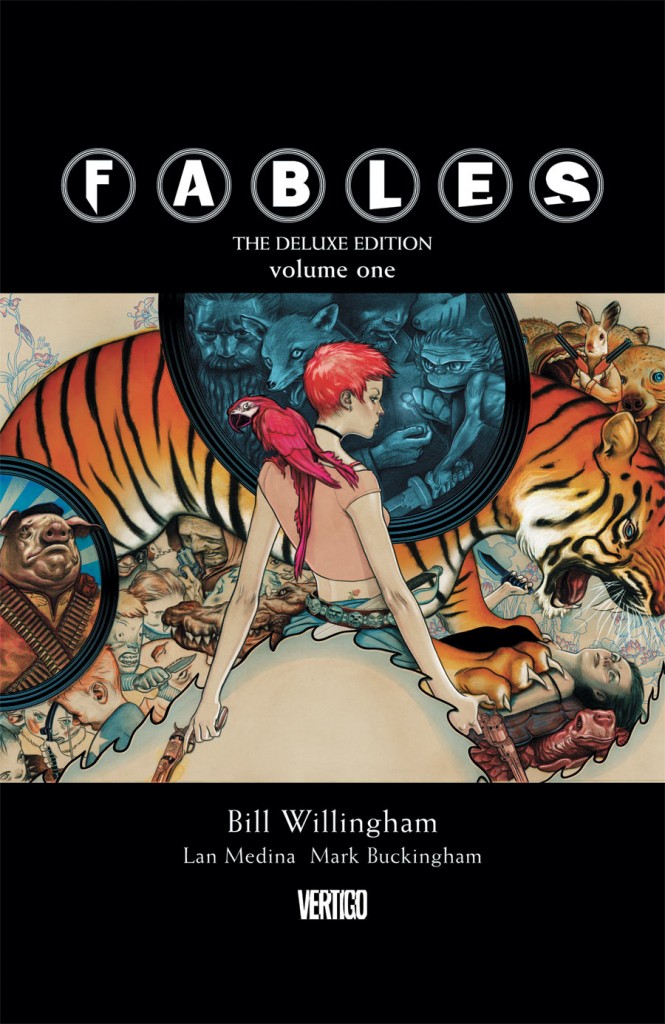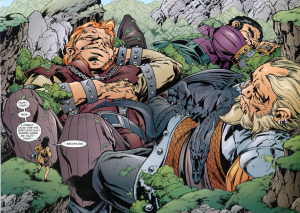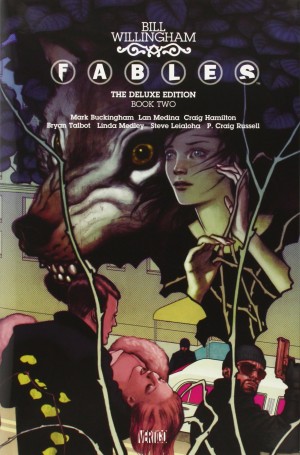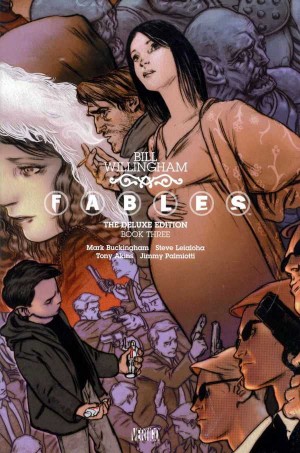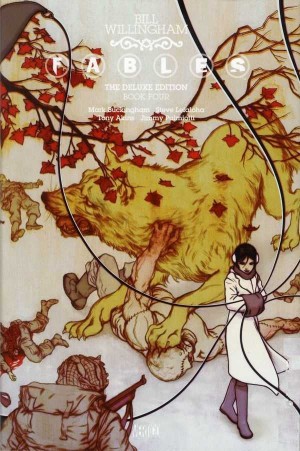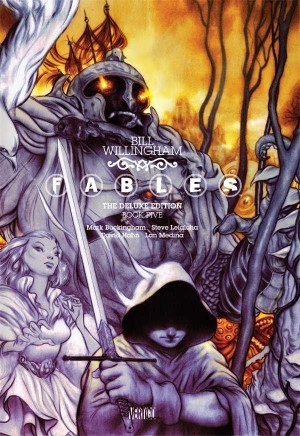Review by Frank Plowright
Fables is a brilliant concept. All those folk and creatures populating fairy tales, myths and nursery rhymes actually exist. Those that can pass for human live in Fabletown, an area of Manhattan where refugees have gathered for centuries after fleeing to Earth as their homelands were occupied by the forces of the monstrous Adversary. There’s also a massive farm area in upstate New York that’s home to Bagheera, Chicken Little, the three blind mice and others that won’t pass for human.
Yes, his stroke of inspiration saved Bill Willingham a lot of the work in coming up with a cast and establishing them, but that was only half the job, and not enough to sustain a series for over a dozen years. Willingham’s greatest strength as a writer is an ability to consistently surprise the readership. Time and time again over the series he’ll drop in a shocking revelation, yet the clues are always planted. Here, though, in these reprints of the earliest Fables stories, Legends in Exile and Animal Farm, he’s quite reached that level, with many of the surprises emanating from reversing pre-conceived ideas about how characters will behave. Goldilocks as a rhetoric-spouting revolutionary rapidly loses her charm.
That said, the wonder of the concept vastly overcomes such initial lack of subtlety. Willingham starts by touring us around Fabletown on the pretext of investigating a murder, then does the same for the Farm. Four primary characters occupy the bulk of the narrative here. One would be a spoiler, but Bigby would develop into the pre-eminent cast member. He’s a marginally less surly version of Wolverine, and as the Big Bad Wolf of legend can transform himself into a giant wolf. Snow White is Fabletown’s chief administrator, assertive, capable and reliable, all characteristics lacking in Jack. He’s devious, shallow, always looking for an angle, and will jump on any attractive woman, with an astonishingly success rate given his wretched character. Known as Jack of All Tales, he’s pretty well every Jack of nursery rhyme or fairy tale origin. This sequence won the Eisner Award for best new series.
Mark Buckingham would become the artist associated with Fables, but it’s Lan Medina who illustrates the opening story arc in very capable fashion. Buckingham arrives for the farm sequence. Realistically illustrating animals of any kind is a talent lacking in many otherwise excellent artists, and throughout the series Buckingham not only manages this, but additionally bestows character on his cast.
These Deluxe Editions are printed on gloss paper rather than the pulp stock used for the paperback equivalents. They’re better bound, hardback, and reasonably priced, so anyone starting to read Fables will probably be best off with these editions. The one downside is that the art is occasionally lost in the binding. That ceases with Deluxe Edition volume four, when Buckingham’s decorative page sidebars become a regular feature. Alternatively, Fables Compendium One gathers the first six Fables volumes as a bulky paperback without any guttter swallowing.
